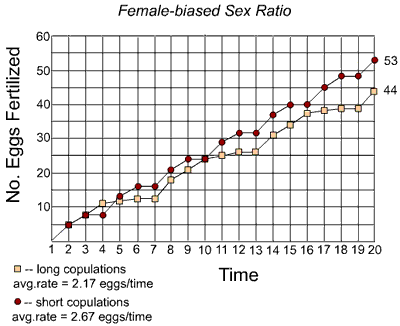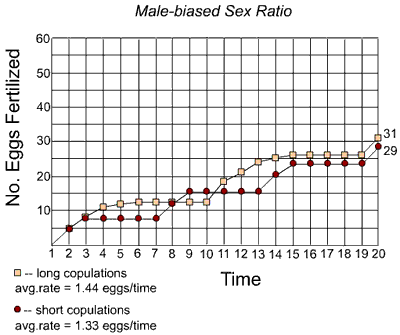Mating Walnut Flies: Male Mating Strategy Gain Curves
The number of eggs fertilized by a focal male can be plotted against time elapsed to create a "gain curve." On the graphs below, the two mating strategies, long copulations and short copulations, are plotted together for comparison.
Since this shows the results of several successive matings, it is actually a series of gain curves over time. Each curve begins to flatten out before the fly switches to another female, because the number of eggs fertilized over time slows down.

Above: because the most eggs are fertilized in the first few seconds of mating, the "short copulations" male (red dots) achieves a higher fertilization rate than the "long copulations" male because he switches females as soon as the curve begins to flatten.

Above: However, when both types of
males must search a long time to find the next female, the "long
copulations" male does better.
